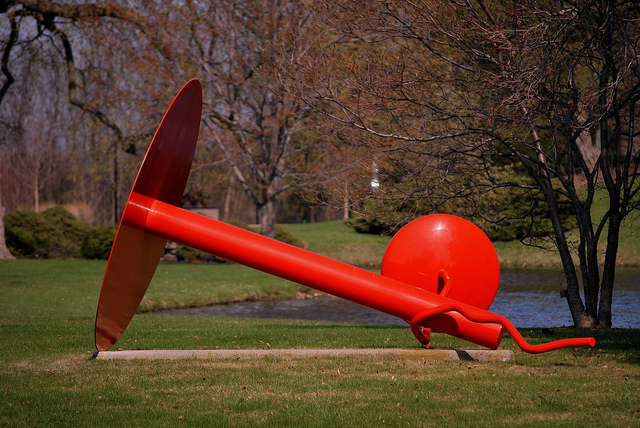Axeltree

Alexander Liberman was born in Kiev, Russia (now Ukraine) in 1912. Liberman was a sculptor, painter, photographer, writer and editor. He is best known for his monumental sculptures and his long tenure as the editorial director of Condé Nast’s publications. Liberman spent his early years in Russia. During the Revolution his mother started the country’s first children’s theater, a development that fostered Liberman’s interest in art. In 1921 the family moved to London where young Alexander attended school. Four years later, the family relocated to Paris. Liberman received a degree in philosophy and mathematics from the Sorbonne in 1930, subsequently attending the École des Beaux-Arts where he studied painting and architecture. Liberman went on to work for the architect August Paret, the poster designer A.M. Cassandre, and at Vu, a French precursor of Life magazine. In 1941, Liberman escaped Nazi-occupied France. He settled in New York City where he quickly secured a position at Vogue. Liberman became Vogue’s art director in 1943 and editorial director of all Condé Nast publications in 1963, a position he held until he retired in 1994. Liberman died in Miami, Florida in 1999.
Liberman returned to painting in the 1940s, producing gestural abstractions and geometric compositions. In 1959 he was introduced to welding by his housekeeper’s husband and had his first solo exhibition in 1960 at the Betty Parsons Gallery, where he showed his new sculptures alongside the paintings. The architect Philip Johnson commissioned Liberman’s first large public sculpture in 1964, and the artist continued to produce public works in the years that followed. His first monumental sculptures, inspired by America’s industrial scale, were geometric and built from discarded tanks, boilers, pipes and steel beams. His building method differed from that of his contemporaries. He would begin by making a full-sized model composed of pieces of discarded metal. He would then produce a small maquette out of good steel based on the full-sized model. His fabricators would create the final full-scale monumental piece from this maquette.
Liberman’s monochromatic sculptures are known for their size, their tubular steel elements, and their upward thrust. The three sculptures in Lynden’s collection, all from 1966 or 1967, show Liberman working in a variety of modes. They range from the monolithic and emphatically vertical Ritual II, to the horizontal and sensual Axeltree, to Orbits, a small work in which negative space predominates. Liberman also favored red for his sculptures—it made them stand out against the gray cities in which they were often placed and provided an additional dynamism--and two of Lynden’s three Liberman sculptures, Axeltree and Orbits, are red.
Axeltree consists of a large flat red disk, resting on its edge, connected to a straight tube. A smaller concave disk with a rim is set at right angles to the large disk and trails a narrower, curving tubular base that intersects the large tube. It resembles an oversized toy or an abandoned piece of satellite equipment, its receivers haplessly searching the universe for signals. Liberman considered the circle a neutral geometric element because it locked into itself and did not leave any loose ends. This led to its use in a variety of symbols and its inherent read as an emblem. Axeltree is the product of a more sensual approach to sculpture, informed by Liberman’s desire to emulate the sexual quality that he found in the Baroque curve, and to establish a connection between drawing and his investigations of physical space and volume.
